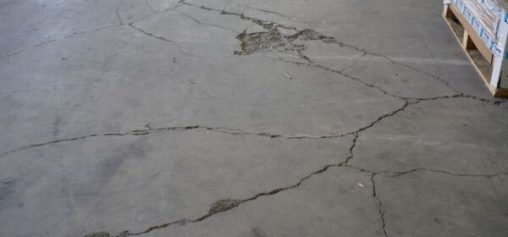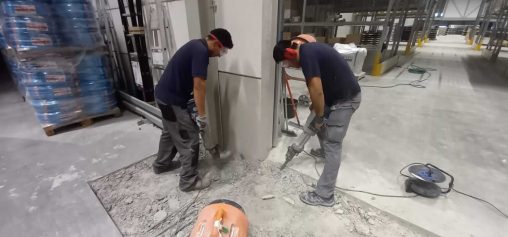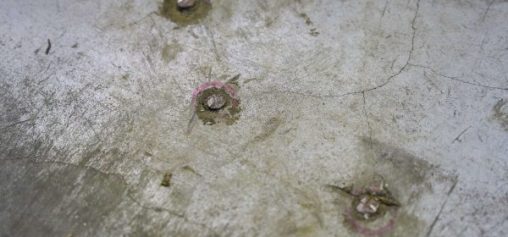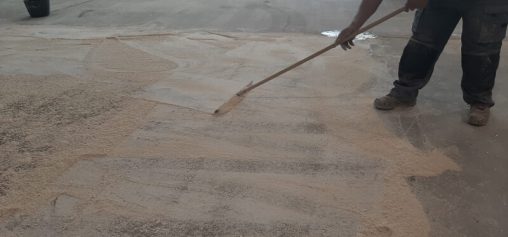We offer expert concrete floor repairs for industrial facilities across all sectors throughout the United States. Contact a specialist today.
BECOSAN® Flooring specialises in the renovation, repair, and treatment of industrial concrete flooring, providing durable and high-quality solutions.


If you’ve made it this far, chances are you’re dealing with issues related to your floor—or the flooring in your facility—and you’re looking for a real solution. At BECOSAN®, we understand that damaged concrete floors can cause serious problems, and fixing them isn’t always straightforward.
A floor in poor condition can lead to hygiene concerns, safety risks, and a negative appearance—just to name a few. If ignored, these issues only get worse, often resulting in costly full-floor replacements and unexpected downtime.
That’s why at BECOSAN®, we offer non-invasive, long-lasting repair solutions that can be completed on-site—without shutting down your operations.
Our mission is to keep disruption to a minimum while delivering durable, cost-effective repairs that stand the test of time.
Concrete problems often stem from poor workmanship, surface damage, improper use, low-quality materials, inadequate slab design, excess moisture, extreme temperatures, and other contributing factors.
The most common symptom—and often the first sign—of floor deterioration is cracking. Left unchecked, cracks can quickly lead to more serious issues.
Cracks may cause sections of the concrete floor to break apart, exposing the subbase and worsening the damage. This not only raises repair costs but also increases safety risks for workers and equipment.
Another vulnerable area is the concrete joints, where dust, debris, and moisture can penetrate. Over time, these cracks can widen and spread, eventually connecting with others and accelerating floor failure.
With years of experience in industrial concrete floor repair and maintenance across the U.S., we’ve seen these issues time and time again. Addressing them early helps prevent costly repairs and reduces operational downtime.
From minor fissures that don’t pose any significant functional problems to large cracks that render the area impassable. Contact nearby concrete floor repair contractors to address these issues efficiently.

Patches are hazardous for industrial vehicles carrying heavy loads, especially when transporting items at great heights. They must be properly secured to ensure a long-lasting solution. Poorly repaired patches can compromise the safety and efficiency of your operations.

Level differences between two warehouses or doorways are dangerous for industrial vehicles carrying heavy loads. Some level discrepancies may not be immediately visible but can lead to accidents. Ensuring a smooth, even surface is crucial for safe, efficient movement within your facility.

Holes in concrete floors can result from bolt removal, crumbling due to cracks, or the presence of foreign objects in the concrete during pouring (e.g., wood fragments). Addressing these issues promptly can prevent further deterioration and costly repairs down the line.

Old shelf anchors need to be removed properly, as they can obstruct the smooth flow of wheeled vehicle traffic. Additionally, during the dismantling and installation of industrial shelving, hundreds of anchors can remain visible on the floor, negatively impacting the aesthetic of your warehouse. A seamless surface is essential for both functionality and the professional appearance of your space.

Various holes caused by the detachment of aggregates or foreign objects in the top layer of concrete flooring can hinder smooth traffic flow with industrial vehicles and cause significant damage if not repaired in time. Regular maintenance is key to preventing such issues from escalating and ensuring the longevity of your floor.

We are a reliable, experienced company that consistently adheres to all current legislation and regulations. Our commitment to quality and compliance ensures peace of mind for all our clients.

PROLOGIS manages large industrial properties worldwide. At BECOSAN®, we have completed numerous projects for them and continue to provide services across their entire portfolio of properties. Our ongoing partnership highlights our reliability and expertise in handling large-scale, high-demand projects.



We have carried out epoxy resin grinding and flooring rehabilitation work in warehouse and production areas. These improvements have significantly enhanced the operational efficiency and safety of their facilities.



We successfully completed a 16,000-square-meter industrial floor rehabilitation project in a large warehouse. This project demonstrates our capability to deliver high-quality, large-scale concrete flooring solutions in demanding industrial environments.
Repairing an old concrete floor aims to avoid a complete reconstruction, which would involve higher costs and more time for the business. Therefore, when deficiencies and damage appear in industrial flooring, it is essential to assess the situation as soon as possible to understand the cause of the issues.
Often, despite careful planning and preparation during the initial construction phase, defects and damage can still arise during the lifespan of the industrial slab. The reasons for this are varied, but more often than not, they are linked to the incorrect choice of flooring material.
If the concern is that repair work may disrupt business activities, rest assured, as it is common to work in sections. A full reconstruction would, of course, present greater challenges. This is why it’s crucial to repair early before the issue escalates.
There are several factors to address before carrying out the actual repair. These include assessing the condition of the floor, understanding the causes behind the damage, and considering the intended future use of the flooring. Once these three variables are clearly understood, the repair process can begin.
To learn more about how the repairs are carried out, check our list of repair services and click on the one that interests you.
There are several materials available for concrete repairs, with leading manufacturers including:
Proper preparation of the affected area is essential. We recommend using a suitable mortar or resin for cracks, typically a two-component mix, ensuring flexibility. In food handling areas or cleanrooms, strict hygiene regulations must be followed, meaning crack repairs should be carried out by experts. Additionally, these materials help prevent dust in the affected areas. Repair materials are selected for their resistance to corrosive agents, oils, and substances that are difficult to remove from concrete floors.
At BECOSAN®, we understand that time is crucial, which is why we strive to minimise the repair duration. We use fast-curing/drying materials that allow the floor 0.to be functional in a short time. Our goal is to minimise production disruption as much as possible.
The time required for repairs depends on their complexity and scale. However, for small to medium repairs, the surface is typically walkable within 4 to 5 hours. For larger patches or more extensive work, the surface is generally accessible within 1-2 days.
We cover a wide range of industrial and commercial sectors, specialising in floors larger than 1,000 m². Our expertise includes repairing floors in community garages, commercial car parks, industrial warehouses, logistics centres, the food and beverage industry, chemical plants, and other large-scale flooring projects.